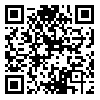BibTeX | RIS | EndNote | Medlars | ProCite | Reference Manager | RefWorks
Send citation to:
URL: http://tumj.tums.ac.ir/article-1-28-en.html
Background: Today, a CT scan examination play an important role in disease diagnosis and thus allocates a significant dose of medical X-ray examinations. One of the important principles in the use of ionizing radiations is to observe radiation protection principles. Evaluating patient's absorbed dose and implementing the strategies for reducing dose are prior in safety issues. To achieve this purpose, sufficient studies should be performed in this regard. Therefore, patient's absorbed dose and the factors affecting have been studied in this research. This study aims to present and develop an acceptable level of absorbed dose in CT scan examinations.
Methods: Diagnostic reference dose level in the adult age group (older than 15 years) has been studied in eleven CT scan centers in Tehran. For this purpose, CT scan examinations prevalent in above-mentioned centers were chosen and Weighted Computed Tomography dose index (CTDIw) and dose length product (DLP) parameters were studied. Standard phantoms with 16 and 32 diameters of Polymethylmethacrylate (PMMA) origin have been used in the centers for CT scan calibration process. CTDIw third quartile has been considered as the diagnostic reference dose level (DRL).
Results: Rate of diagnostic reference dose in the adult age group (older than 15 years) for the head, sinus, lungs, abdomen and pelvis are 50.87, 38.27, 8.05 and 9.11 mg, respectively. Dose measurements made in this survey have been used to set up local DRLs and can be used as a template for national DRLs.
Conclusion: Value of diagnostic reference dose for the head examinations is more than the other parts and diagnostic reference dose in Tehran city in the Adult age group and the protocols compared is less than national reference dose.
| Rights and permissions | |
 |
This work is licensed under a Creative Commons Attribution-NonCommercial 4.0 International License. |





